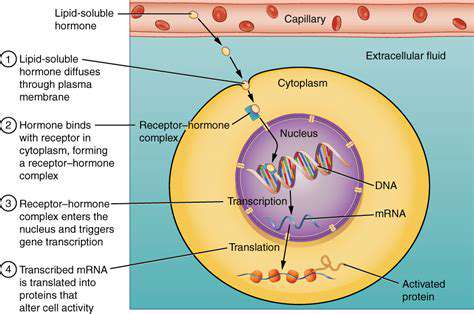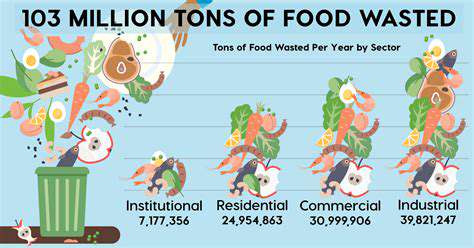The Interplay Between Hormones and Nutrition
Hormonal Regulation of Metabolism
Hormones play a crucial role in regulating metabolism, the process by which the body converts food into energy. Thyroid hormones, for instance, act as metabolic thermostats, determining how quickly calories are burned throughout the day. When these chemical messengers fall out of balance, the consequences ripple across multiple systems - altering weight patterns, energy availability, and even body temperature regulation. The dance between insulin and glucagon deserves particular attention, as these pancreatic hormones work in tandem to manage fuel storage and mobilization with remarkable precision. This sophisticated regulatory network evolved to maintain equilibrium, efficiently allocating energy resources based on availability and demand.
Nutritional building blocks directly influence hormonal effectiveness. Iodine, for example, serves as the foundational element for thyroid hormone synthesis - without adequate intake, even a perfectly functioning thyroid gland cannot produce sufficient hormones. Other micronutrients like selenium and iron further modulate hormonal activity at the cellular level. When dietary deficiencies persist, they create metabolic bottlenecks where hormonal signals become distorted or weakened. This explains why populations with limited food diversity often experience higher rates of thyroid disorders and metabolic syndrome despite having genetically normal endocrine systems.
Nutritional Impact on Hormone Production and Regulation
Modern food environments present both challenges and opportunities for hormonal health. Whole foods provide the complete matrix of cofactors needed for proper hormone synthesis - the zinc in oysters supports testosterone production, while the fatty acids in walnuts contribute to prostaglandin formation. Processed foods, however, disrupt this delicate biochemistry through multiple mechanisms. Refined carbohydrates trigger exaggerated insulin spikes that eventually lead to cellular resistance, while industrial seed oils promote inflammatory pathways that interfere with hormonal signaling. The liver's detoxification pathways become particularly burdened when processing synthetic additives and oxidized fats, reducing its ability to properly metabolize and regulate circulating hormones.
Protein quality deserves special consideration in hormonal nutrition. Complete proteins containing all essential amino acids serve as precursors for peptide hormones and neurotransmitters. The branched-chain amino acids in whey protein, for example, stimulate insulin-like growth factor while supporting muscle protein synthesis. Conversely, chronic protein deficiency forces the body to prioritize survival functions, shutting down reproduction-related hormones first - a phenomenon well documented in cases of eating disorders and extreme calorie restriction.
The Role of Diet in Managing Hormonal Imbalances
Strategic nutrition interventions can recalibrate disrupted hormonal patterns. Fiber-rich foods modulate estrogen metabolism through their impact on gut microbiota, while omega-3 fatty acids from fatty fish help restore insulin sensitivity at the cellular level. The mineral content of leafy greens - particularly magnesium and calcium - supports adrenal function and stress hormone regulation. These nutritional approaches work synergistically, addressing hormonal imbalances from multiple angles rather than targeting single pathways like pharmaceutical interventions often do.
Traditional dietary patterns like the Mediterranean diet demonstrate how cultural wisdom aligns with modern endocrinology. The combination of polyphenol-rich olive oil, selenium-packed seafood, and antioxidant-loaded herbs creates an ideal environment for hormonal harmony. What makes these ancestral diets particularly effective is their inherent focus on food quality and seasonal availability, ensuring a rotating intake of diverse phytonutrients that support various endocrine functions throughout the year.












